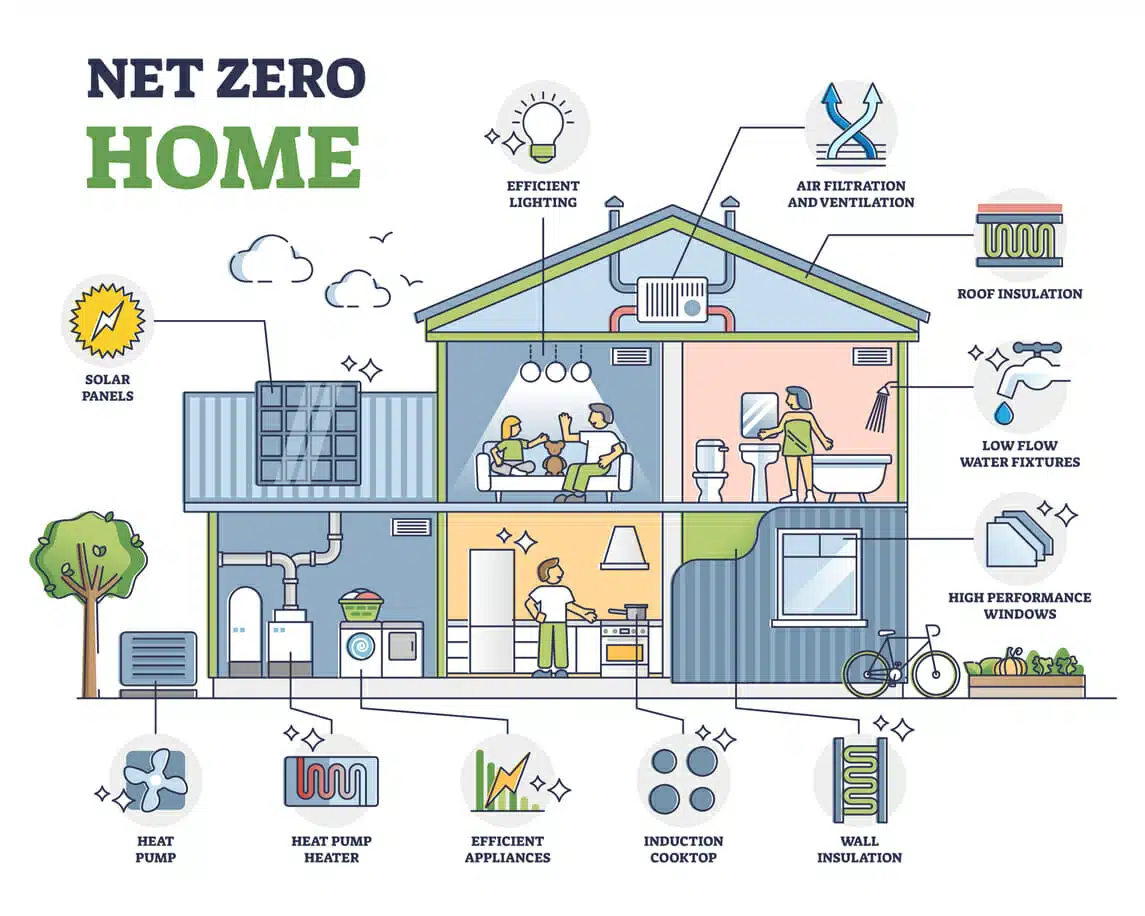Net Zero Home Design

Net Zero Home Design: A Comprehensive Guide
Definition of Net Zero Homes
Net zero homes are highly energy-efficient dwellings that produce as much energy as they consume over the course of a year. This is achieved through a combination of passive design strategies, energy-efficient appliances and systems, and renewable energy sources.
Types of Net Zero Homes
There are two main types of net zero homes:
- Grid-tied net zero homes: These homes are connected to the electrical grid and export any excess energy they produce.
- Off-grid net zero homes: These homes are not connected to the electrical grid and rely solely on their own renewable energy sources.
Differences Between Net Zero and Passive Homes
Net zero homes and passive homes are both energy-efficient, but there are some key differences between the two:
- Net zero homes: Focus on producing as much energy as they consume, while passive homes focus on minimizing energy consumption.
- Passive homes: Rely on passive design strategies, such as proper insulation, airtight construction, and natural ventilation, to reduce energy consumption. Net zero homes may use a combination of passive and active design strategies, including renewable energy sources.
Ease of Building Net Zero Homes
Building a net zero home can be more challenging than building a conventional home, but it is becoming increasingly feasible as technology advances and costs decrease.
Process of Building a Net Zero Home
The process of building a net zero home typically involves the following steps:
- Site selection: Choosing a site that is suitable for passive design strategies, such as solar orientation and access to natural ventilation.
- Design: Developing a design that incorporates passive design strategies, energy-efficient appliances and systems, and renewable energy sources.
- Construction: Building the home using energy-efficient materials and techniques.
- Commissioning: Testing and verifying that the home meets the net zero energy performance goals.
Advantages of Net Zero Homes
There are many advantages to building a net zero home, including:
- Reduced energy costs: Net zero homes can significantly reduce energy costs, as they produce as much energy as they consume.
- Increased comfort: Net zero homes are typically more comfortable to live in than conventional homes, as they are well-insulated and airtight.
- Environmental benefits: Net zero homes help to reduce greenhouse gas emissions and promote sustainability.
Disadvantages of Net Zero Homes
There are also some disadvantages to building a net zero home, including:
- Higher upfront costs: Net zero homes can be more expensive to build than conventional homes, due to the cost of energy-efficient materials and systems.
- Limited availability of builders: Finding a builder who is experienced in building net zero homes can be challenging.
- Maintenance: Net zero homes may require more maintenance than conventional homes, as they rely on renewable energy sources and energy-efficient systems.
How to Make Your Home Net Zero
There are a number of ways to make your home net zero, including:
- Insulating your home: Adding insulation to your home can help to reduce heat loss and improve energy efficiency.
- Installing energy-efficient windows and doors: Energy-efficient windows and doors can help to reduce heat loss and air leakage.
- Using energy-efficient appliances: Energy-efficient appliances can help to reduce your energy consumption.
- Installing a renewable energy system: A renewable energy system, such as a solar or wind system, can help to generate electricity for your home.
What to Consider When Building a Net Zero Home
There are a number of factors to consider when building a net zero home, including:
- Your climate: The climate in your area will affect the design of your net zero home.
- Your budget: The cost of building a net zero home will vary depending on the size and complexity of the home.
- Your lifestyle: Your lifestyle will affect the energy consumption of your home.
Conclusion
Net zero homes are a sustainable and energy-efficient option for homeowners who are looking to reduce their energy costs and environmental impact. While there are some challenges to building a net zero home, the benefits can be significant.
FAQs
Q: What is the difference between a net zero home and a passive home?
A: Net zero homes focus on producing as much energy as they consume, while passive homes focus on minimizing energy consumption.
Q: Are net zero homes more expensive to build than conventional homes?
A: Net zero homes can be more expensive to build than conventional homes, but the cost is decreasing as technology advances.
Q: What are the benefits of building a net zero home?
A: The benefits of building a net zero home include reduced energy costs, increased comfort, and environmental benefits.
Closing Statement
Net zero homes are a promising solution to the challenges of climate change and energy insecurity. By building net zero homes, we can reduce our energy consumption, save money, and protect the environment.
Disclaimer
The information provided in this article is for general informational purposes only and should not be construed as professional advice. Consult with a qualified professional before making any decisions about building or renovating a home.